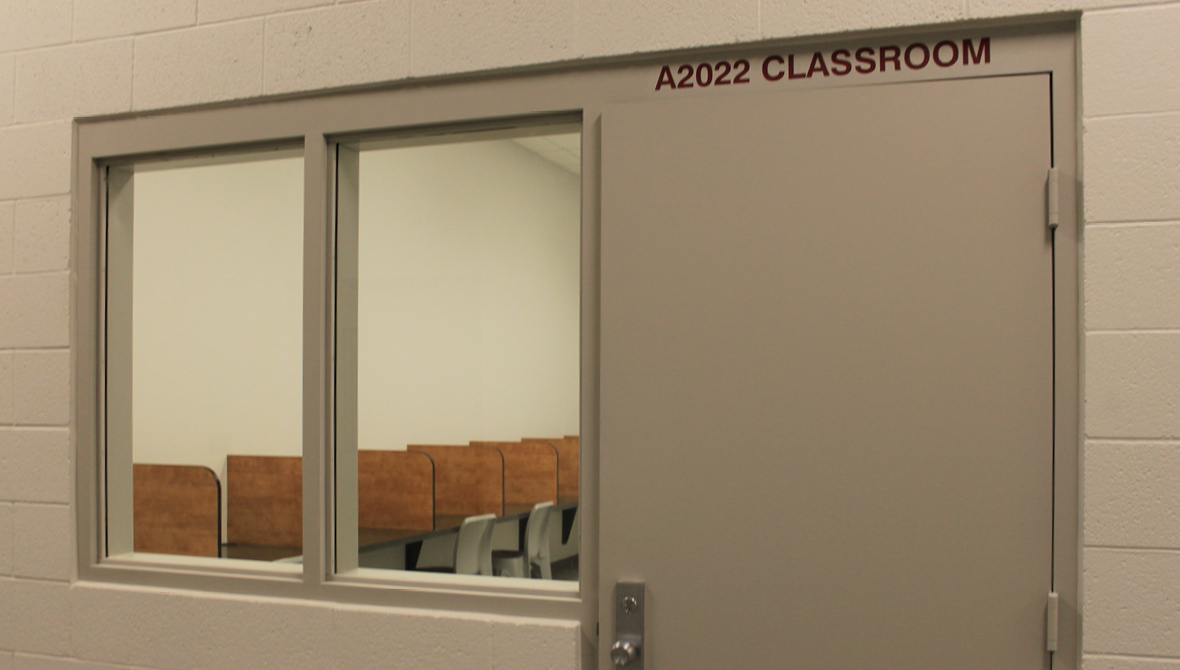With Thousands of Incarcerated Students Enrolled in Higher Education, How do We Measure Success?


 This article was first published in our 11 Trends in Philanthropy for 2024 report. Explore the full report here.
This article was first published in our 11 Trends in Philanthropy for 2024 report. Explore the full report here.
Want the latest trends, research, and more delivered right to your inbox? Subscribe to the Johnson Center email newsletter.
As predicted in our 2022 Trends report, postsecondary educational programming in prison continues to grow (Hawver & Yore-VanOosterhout). With this growth comes a once-in-a-generation opportunity to reshape how we evaluate rehabilitative programming and, more importantly, its impacts on the people enrolled in the same.
According to the most recent data available, there are now more than 400 Higher Education in Prison (HEP) programs across the country, and every state offers at least one HEP program for people incarcerated in their system (National Directory of Higher Education in Prison Programs, 2023). Philanthropic involvement in HEP continues to grow apace as foundations give millions of dollars in support. For example:
In June 2023, the Mellon Foundation announced more than $5 million in grant funding to seven higher education institutions to support the expansion of higher education in the carceral system. Mellon has contributed more than $60 million to HEP since 2015 — nearly half this amount in just the last two years.
The principal reason for this sudden expansion of HEP programs and grants is the restoration of federal student loan programs for incarcerated students.* Through the FAFSA Simplification Act, incarcerated students enrolled in approved prison education programs will once again be eligible for Federal Pell Grants (Federal Student Aid Knowledge Center, 2023) — an opportunity denied them for nearly 30 years since the enactment of the 1994 Violent Crime Control and Law Enforcement Act (Tewksbury et al., 2000). As a result, HEP is fertile ground for postsecondary programs to expand their enrollment and diversify their student body.
“[M]any HEP programs and advocacy organizations have begun calling for a change in how we measure success for formerly incarcerated people. Funders intending to evaluate their HEP investments in the coming years will face the same critiques.”
To guard against the exploitation of students and to ensure they are receiving a high-quality education for these limited funds, the U.S. Department of Education requires periodic evaluations of prison education programs (Gaskill & Castro, 2023). Historically, these evaluations have measured “recidivism.” In recent years, however, many HEP programs and advocacy organizations have begun calling for a change in how we measure success for formerly incarcerated people. Funders intending to evaluate their HEP investments in the coming years will face the same critiques.
Although there is no single definition, “recidivism” is widely understood as a person’s re-involvement in criminal activity after they have been released from the carceral system (Bureau of Justice Statistics, n.d.). This term was popularized after 1967 when the President’s Commission on Law Enforcement and Administration of Justice released a report declaring that reduced recidivism should be a key goal for this system (as cited in National Academies of Sciences, Engineering, and Medicine, 2022). Today, the metric is everywhere in public conversations about prison — a ubiquitous proxy for “rehabilitation” itself.
However, scholars examining the carceral system and its societal impacts have long critiqued the measure. Many point to inconsistent measurement, for example (Maltz, 1984). With no set standard on how to calculate how often people return to criminality, institutions decide for themselves what methods they use; unsurprisingly, this can result in problems ranging from broad public misunderstanding to cherry-picking the method that best makes one’s case.
For example, some studies measure recidivism by tallying rearrests — that is, the number of people released from prison who are arrested again within a certain period of time (Bureau of Justice Statistics, 2002). But “arrest rates are as much a function of police activities as they are of criminal activities,” and there are perhaps no communities so highly surveilled as those with high numbers of people returning from prison — often communities of color (quote from Gottschalk, 2015, p. 104; for surveillance, see Clear, 2007). In addition, some state departments of corrections monitor returnees’ criminal records only for their first year after release, while others may monitor records for three years or more, inevitably increasing the recidivism rate (Klingele, 2019).
Pointing fingers at the people committing crimes, a high recidivism rate can justify curtailing parole and expanding the prison system to “lock them up.” Looking instead at the carceral system, a high recidivism rate can signal the failure of prisons to rehabilitate, and prompt demands for decarceration. Whichever way the political winds blow, criminal justice scholars Ian Loader and Richard Sparks argue, “there is always more at stake in crime reduction than reducing crime, and hence more to evaluation than finding out ‘what works’” (as quoted in Gottschalk, 2015, p. 101).
Indeed, interventions in human behavior don’t always “work” once and for all. Recidivism asks a “yes” or “no” question at a single moment in time: did someone commit another crime or didn’t they? It does not tell us, for instance, whether subsequent crime(s) were of lesser severity than the first, or motivated by addiction or unaddressed mental illness, or the result of heightened scrutiny on behaviors that other non-incarcerated people don’t think twice about: behaviors such as legal drug or alcohol use, or staying out past a certain hour of the night.
The FAFSA Simplification Act requires every HEP program be evaluated by corrections agencies that can provide oversight and assess whether programs are operating in students’ best interests (Gaskill & Castro, 2023). For programs that do not pass this “best interest” determination, students will no longer receive Pell Grants. While measuring recidivism and rates of completion are optional, oversight entities can adopt them. Without intentional action, a focus on recidivism may still dominate and skew the conversation.
Some higher education institutions have expressed that recidivism should not be used to evaluate their programs (Gaskill & Castro, 2023). Advocates call for other measurements to determine a program’s success, guided by a commitment to equity, excellence, and access (Erzen et al., 2019).
But how else could we evaluate programming that must be — by the very nature of the system in which it resides — rehabilitative? There are several alternatives.
First, watching for “markers of desistance” is only a small step away from traditional measurements of recidivism but asks a much different question. Instead of answering “yes” or “no” to the potential presence of crime, evaluators look for signs that a person’s criminal behavior is becoming less severe or more infrequent over time. While any criminality would be seen as a failure in the recidivism paradigm, lessening the severity or frequency of offending may show success for rehabilitative programming (Klingele, 2019).
Philanthropy will continue to play a large role in providing higher education to incarcerated students for at least the next several years. Foundations can be a leader in this by funding evaluation methods that prioritize metrics beyond recidivism (Erzen et al., 2019). While recidivism rates may be useful in gaining support for HEP from taxpayers, as Patrick Filipe Conway, director of the Boston College Prison Education Program, emphasizes, “a purely instrumental approach does not fully capture – and, in fact, might obscure – more foundational civic principles to the recognition of human dignity and the provision of education access and opportunity” (2023, p. 477).


National Directory of Higher Education in Prison Programs. (2023, May). Alliance for Higher Education in Prison. https://www.nationaldirectoryhep.org/national-directory/stats-view
Ascendium Education Group. (2023). All grants. https://www.ascendiumphilanthropy.org/our-grantmaking/all-grants?focusarea%5B0%5D=47&start=10
Bureau of Justice Statistics. (n.d.). What is recidivism. https://www.bjs.gov/recidivism/templates/definition.cfm
Clear, T. (2007). Imprisoning communities: How mass incarceration makes disadvantaged neighborhoods worse. Oxford University Press.
Conway, P. F. (2023, Summer). Beyond recidivism: Exploring formerly incarcerated student perspectives on the value of higher education in prison. The Review of Higher Education 46(4), 453–483. https://doi.org/10.1353/rhe.2023.a900569
Erzen, T., Gould, M. R., & Lewen, J. (2019). Equity and excellence in practice: A guide for higher education in prison. Alliance for Higher Education in Prison and Prison University Project.
https://www.luminafoundation.org/wp-content/uploads/2019/05/equity-and-excellence-in-practice.pdf
Federal Student Aid Knowledge Center. (2023, March 29). Eligibility of confined or incarcerated individuals to receive Pell Grants. U.S. Department of Education. https://fsapartners.ed.gov/knowledge-center/library/dear-colleague-letters/2023-03-29/eligibility-confined-or-incarcerated-individuals-receive-pell-grants
Formerly Incarcerated College Graduates Network. (n.d.). Our pledge. https://ficgn.org/our-pledge/
Gaskill, S., & Castro, E. L. (2023, April). Proposed ‘best interest of students’ metrics for prison higher education: Guidance from public comments. The Research Collaborative on Higher Education in Prison. https://prisoneducationproject.utah.edu/research/upep_research_proposals/guidance_from_public_comments_april2023.pdf
Gottschalk, M. (2015). Caught: The prison state and the lockdown of American politics. Princeton University Press.
Hawver, T., & Yore-VanOosterhout, A. (2022, January 18). Reopening federal Pell grants for incarcerated people means higher ed and funders can do more. 11 Trends in Philanthropy for 2022. Dorothy A. Johnson Center for Philanthropy. https://johnsoncenter.org/blog/reopening-federal-pell-grants-for-incarcerated-people-means-higher-ed-and-funders-can-do-more/
Klingele, C. (2019). Measuring change: From rates of recidivism to markers of desistance. Journal of Criminal Law and Criminology, 109(4), 769–817. https://scholarlycommons.law.northwestern.edu/jclc/vol109/iss4/2
Maltz, M. (1984). Recidivism. Academic Press.
Mellon Foundation. (2023, June 6). Mellon announces over $5M in funding for higher education in prisons. https://www.mellon.org/news/grants-to-increase-higher-education-opportunities-in-prisons
National Academies of Sciences, Engineering, and Medicine. (2022). The limits of recidivism: Measuring success after prison. The National Academies Press. https://doi.org/10.17226/26459
Tewksbury, R., Erickson, D. J., & Taylor, J. M. (2000). Opportunities lost: The consequences of eliminating Pell grant eligibility for correctional education students. Journal of Offender Rehabilitation, 31(1/2), 43–56. https://doi.org/10.1300/J076v31n01_02
Tran, N. T., Baggio, S., Dawson, A., O’Moore, É., Williams, B., Bedell, P., Simon, O., Scholten, W., Getaz, L., & Wolff, H. (2018, November). Words matter: A call for humanizing and respectful language to describe people who experience incarceration. BMC International Health and Human Rights, 18(1):41. https://www.ncbi.nlm.nih.gov/pmc/articles/PMC6240232/